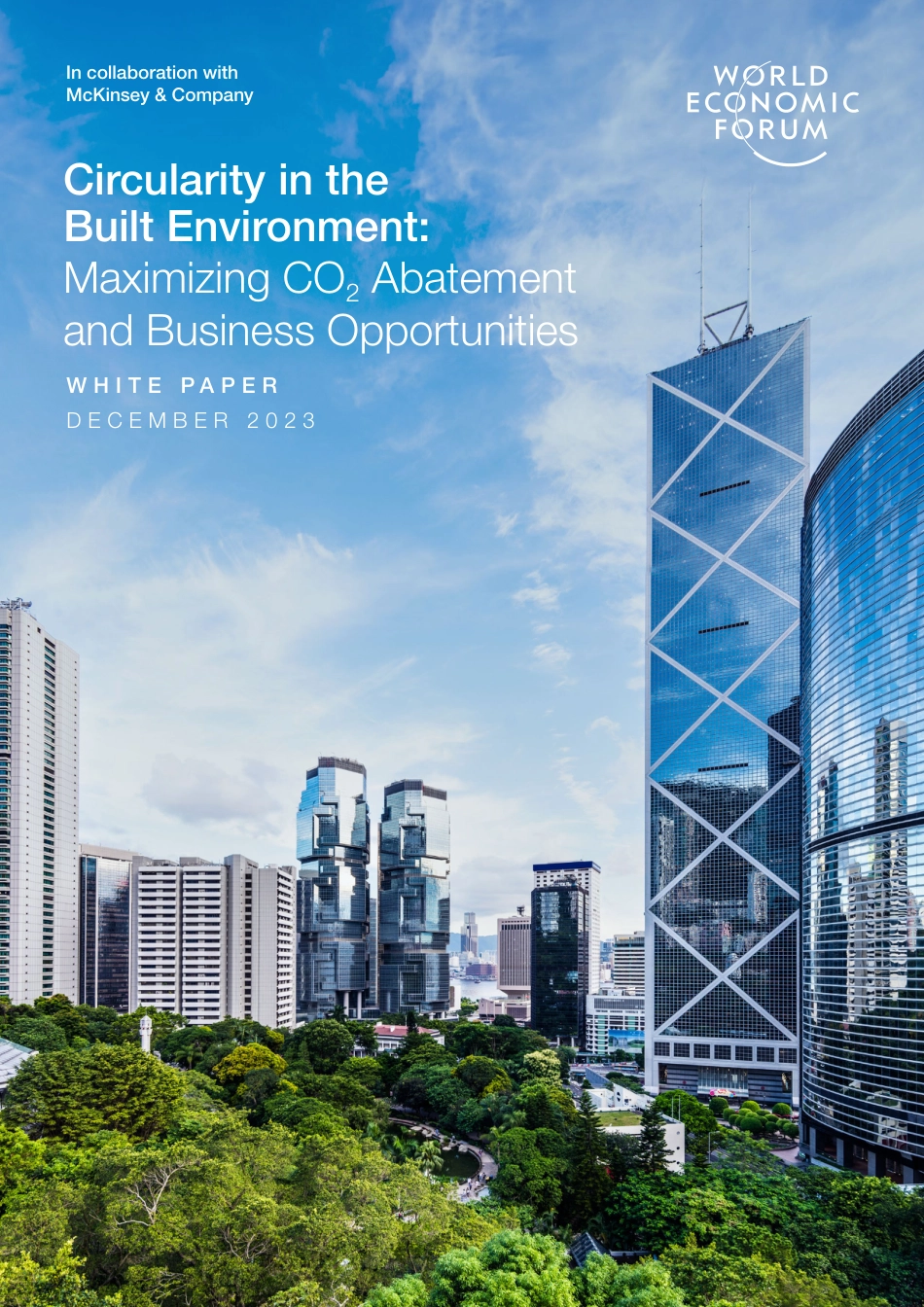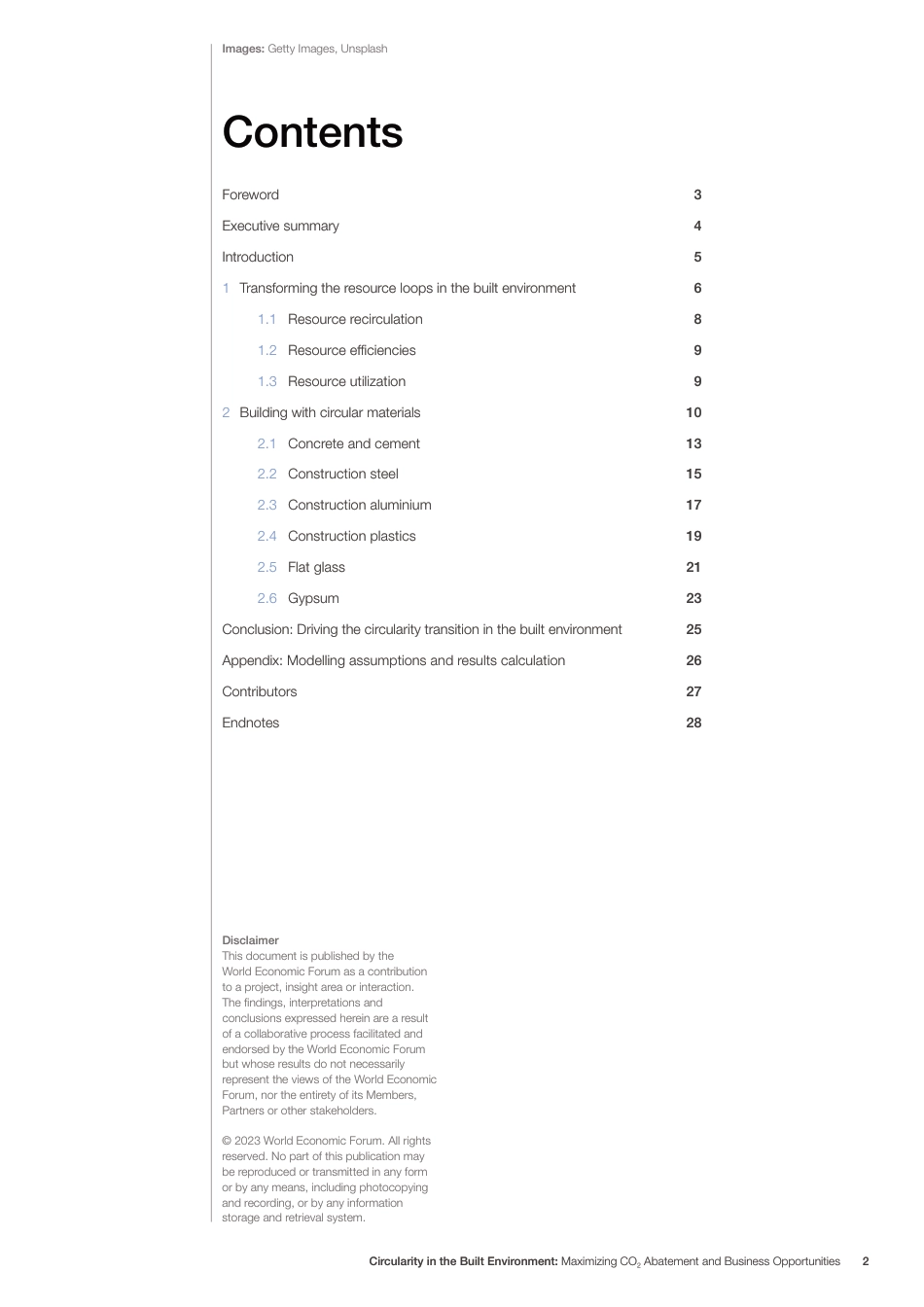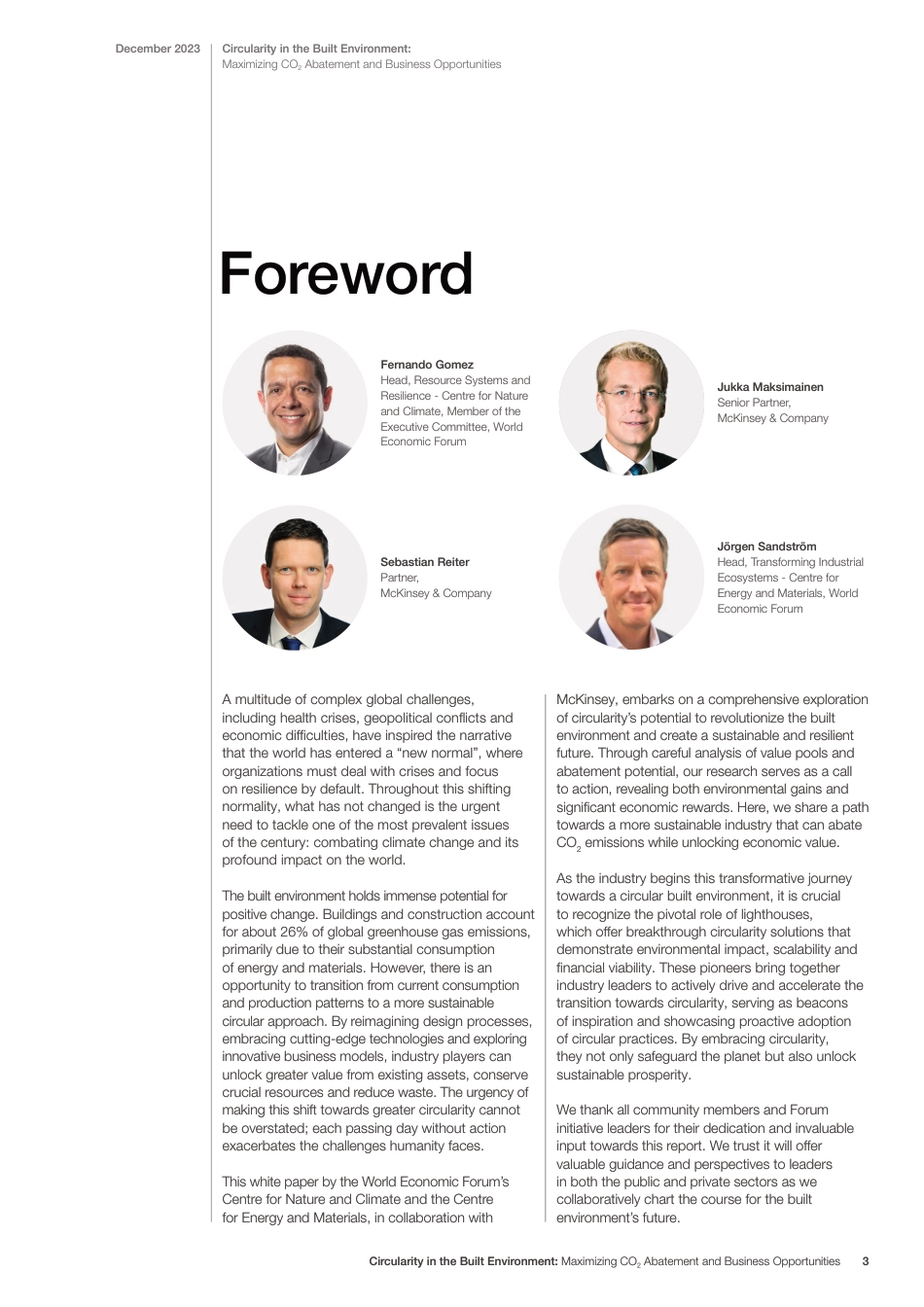Circularity in the Built Environment: Maximizing CO2 Abatement and Business OpportunitiesW H I T E P A P E RD E C E M B E R 2 0 2 3In collaboration with McKinsey & CompanyImages: Getty Images, Unsplash© 2023 World Economic Forum. All rights reserved. No part of this publication may be reproduced or transmitted in any form or by any means, including photocopying and recording, or by any information storage and retrieval system.Disclaimer This document is published by the World Economic Forum as a contribution to a project, insight area or interaction. The findings, interpretations and conclusions expressed herein are a result of a collaborative process facilitated and endorsed by the World Economic Forum but whose results do not necessarily represent the views of the World Economic Forum, nor the entirety of its Members, Partners or other stakeholders.ContentsForeword 3Executive summary 4Introduction 51 Transforming the resource loops in the built environment 61.1 Resource recirculation 81.2 Resource efficiencies 91.3 Resource utilization 92 Building with circular materials 102.1 Concrete and cement 132.2 Construction steel 152.3 Construction aluminium 172.4 Construction plastics 192.5 Flat glass 212.6 Gypsum 23Conclusion: Driving the circularity transition in the built environment 25Appendix: Modelling assumptions and results calculation 26Contributors 27Endnotes 28Circularity in the Built Environment: Maximizing CO2 Abatement and Business Opportunities2ForewordA multitude of complex global challenges, including health crises, geopolitical conflicts and economic difficulties, have inspired the narrative that the world has entered a “new normal”, where organizations must deal with crises and focus on resilience by def...



